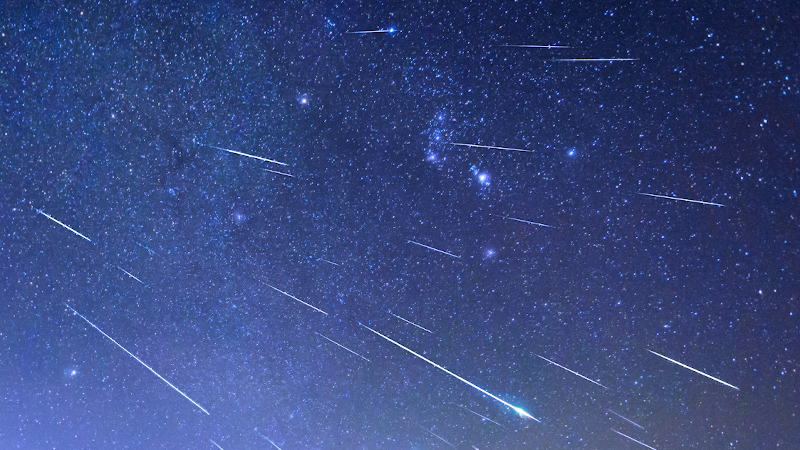The Perseids are active from July to September, but each year the dazzling meteor shower reliably reaches its peak in August. This weekend is the best time to see it.

Perseid meteor shower and Blue Moon are among the astronomical events in August 2024
From a popular summer meteor shower to the seasonal blue moonrise, here are the top astronomy events for August 2024.
There’s a reason the Perseid meteor shower is considered the most beautiful of the year.
With its sizzling meteors and blazing fireballs, this celestial phenomenon provides a reliable spectacle for skywatchers around the world every year. But perhaps the best thing about the Perseids is that they peak not in the colder months like the Leonids in November or the Geminids in December, but in the warm summer.
And in 2024, that peak is expected to be reached this weekend.
Spectators who go outside at just the right time can watch up to 100 meteors per hour streak across the night sky, leaving long trails of light and color. Even better, with any luck, the peak of the Perseids this year happens to coincide with a possible appearance of the famous Aurora Borealis, or Northern Lights.
Here’s everything you need to know about the Perseid meteor shower and how you can experience its peak this weekend.
Boeing Starliner: Starliner astronauts are not the first to be “stuck” in space: Frank Rubio’s delayed return sets a record
When does the Perseid meteor shower reach its peak?
While the Perseids are active from July 14 to September 1 this year, the meteors are expected to reach their peak activity on Sunday and Monday, according to the American Meteor Society.
Year-to-year lunar conditions have a strong influence on how strong each Perseid event is during the annual peak. For example, if a bright moon is above the horizon on the night of peak activity, then the relatively faint Perseid meteors will be smaller and therefore difficult to see, says the American Meteor Society.
However, if skies are relatively clear this year, the half-illuminated moon should set around 11:30 p.m. local time, creating favorable conditions for viewing the Perseids, according to NASA. Meteor activity will then increase from then on and last until about dawn.
How to observe the Perseids?
The Perseids are best observed in the Northern Hemisphere.
Once the moon sets, viewers will only have to contend with local light pollution and clouds that could affect the number of meteors visible.
What causes the Perseid meteors?
The Perseids originate from the constellation Perseus and consist of leftover particles from the comet 109P/Swift-Tuttle.
Every year, Earth passes through the comet’s debris trail, which NASA says results in the Perseid meteor shower, when the broken pieces of Swift-Tuttle collide with our atmosphere at high speeds, disintegrating and creating fiery, colorful streaks in the sky.
Swift-Tuttle, which takes 133 Earth years to orbit the Sun just once, was discovered as the source of the Perseids in 1865 by Italian astronomer Giovanni Schiaparelli. Discovered in 1862, Swift-Tuttle is absolutely gigantic – twice the size of the asteroid that is said to have wiped out the dinosaurs 66 million years ago.
Although their counterpart, the Geminids, are among the strongest and most consistent meteor showers, the Perseids can still produce between 50 and 100 meteors per hour under the right conditions.
The meteor shower is also known for the fireballs it emits. These huge explosions of light and color can last even longer than the average meteor impact, NASA says.
Eric Lagatta covers breaking and trending news for USA TODAY. Reach him at [email protected]

